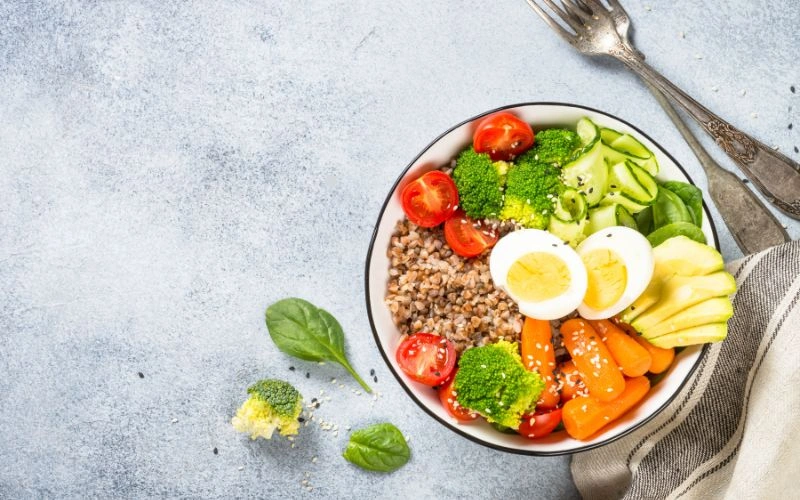Nutritional Requirements For High-Intensity Training

In high-intensity environments such as military service, firefighting, law enforcement, and emergency response, physical and mental performance depend heavily on more than just training—it also rely on consistent, effective nutrition for maintaining tactical fitness. The right foods at the right time ensure your body can perform under pressure, recover quickly, and remain resilient.
Based on official USDA recommendations, this guide outlines science-backed, mission-critical nutritional requitements for tactical athletes. These strategies help you fuel performance, prevent fatigue, and recover fully.
Understanding High-Intensity Training

High-intensity training involves short bursts of intense activity followed by brief rest periods. These workouts significantly elevate heart rate, challenging aerobic and anaerobic energy systems. The intensity and duration of HIT sessions can vary, but they typically last between 20 and 60 minutes, depending on the training goals and protocols.
Macronutrients: Fueling Your Body Correctly
Every tactical athlete’s diet should prioritize the three essential macronutrients: carbohydrates, proteins, and fats. Each serves a vital purpose in the high-intensity tactical workout.
1. Carbohydrates: The Primary Fuel Source (55–65% of Daily Intake)
Carbohydrates are your body’s most accessible energy source during high-intensity activities. They support brain function, muscle contractions, and endurance.
Best Carb Sources:
- Whole grain or whole wheat bread (ensure the first ingredient is “whole grain” or “whole wheat flour”)
- Brown rice, oats, and whole grain pasta
- Fruits and vegetables
- Beans and legumes
- Low-fat dairy
Without enough carbs, your body taps into protein for energy, depriving your muscles of the fuel needed for repair. Tactical athletes should fuel up with complex carbs throughout the day, especially before and after training.
2. Protein: The Repair and Recovery Nutrient (15–20%)
Protein supports muscle growth, repair, and overall recovery. However, excess intake won’t build muscle without strength training—it adds unnecessary calories.
Daily Protein Needs (Per Pound of Bodyweight):
- General Tactical Athlete: 0.5–0.8 g/lb
- Muscle-Building Phase: 0.7–1.0 g/lb
- Caloric Restriction Phase: 0.8–1.0 g/lb
Top Protein Sources:
- Lean meats (poultry, fish, lean beef, pork tenderloin)
- Eggs
- Low-fat dairy
- Nuts and seeds
- Beans and legumes
Aim to include protein at every meal and snack, especially post-exercise, when muscle repair is most active.
3. Fats: Supporting Hormones and Long-Term Energy (20–30%)
Fats help absorb fat-soluble vitamins (A, D, E, K), cushion organs, and provide slow-burning fuel during longer missions or tactical drills.
Recommended Daily Fat Intake: Minimum 75 grams per day
Best Fat Sources
- Extra Virgin Olive Oil (EVOO)
- Avocados
- Fatty fish (like salmon)
- Nuts and seeds
- Natural peanut butter
- Flaxseeds
Avoid
- Trans fats (processed or hydrogenated oils)
- Excess saturated fats (fried foods, fatty cuts of meat)
Meal Timing: When You Eat Matters as Much as What You Eat

To maximize performance and recovery, tactical athletes should aim to eat every 3–4 hours, spacing meals and snacks throughout the day.
1. Pre-Workout Nutrition (3–4 Hours Before)
Fueling before training improves endurance, benefits functional fitness, delays fatigue, and enhances strength output. Choose a meal rich in carbohydrates with moderate protein and low fat.
Examples
- Banana & peanut butter sandwich + low-fat milk
- Chicken, rice & steamed vegetables
- Whole grain pasta with lean ground turkey and tomato sauce
2. Pre-Training Snack (30 Minutes – 2 Hours Before)
Choose quick-digesting carbs to top off your glycogen stores without causing digestive upset.
Examples
- A granola bar
- A banana or an apple
- Half a bagel with jam
3. Post-Workout Nutrition (Within 30 Minutes)
Recovery starts immediately after training. Aim for a combo of protein + carbohydrates to repair muscle and replenish glycogen.
Examples
- 8–16 oz. chocolate milk
- Turkey sandwich on whole-grain bread
- Flavored Greek yogurt with fruit
- Protein smoothie with banana and milk
4. Full Meal Within 2 Hours of Training
This meal should be balanced and contain all five food groups: lean protein, whole grains, fruits, vegetables, and low-fat dairy.
Examples
- Grilled chicken + sweet potato + mixed vegetables + fruit
- Tuna salad with veggies, whole grain crackers, and cheese
- Homemade burrito with beans, salsa, veggies, and low-fat cheese
Sample Meal Plan for Tactical Athletes
Here’s a structured example meal plan that reflects the macronutrient ratios and timing ideal for high-intensity training.
| Meal | Menu Example |
| Breakfast | Oatmeal with berries, scrambled eggs, and low-fat milk |
| Snack (Mid-Morning) | Greek yogurt with almonds and a small banana |
| Lunch | Grilled chicken breast, quinoa, sautéed spinach, and sliced oranges |
| Snack (Pre-Workout) | Whole grain bagel with natural peanut butter |
| Post-Workout Snack | 12 oz. chocolate milk or Greek yogurt smoothie with banana |
| Dinner | Baked salmon, brown rice, steamed broccoli, and avocado slices |
| Evening Snack | Low-fat cottage cheese with pineapple or mixed berries |
Hydration: The Overlooked Edge
Water is just as vital as food. Dehydration can quickly impair physical performance, increase the risk of heat injury, and reduce mental sharpness. Always keep your Chase tactical hydration pouch with you, whether in a gym, on a mission, or off duty.
Basic Daily Fluid Needs
- Minimum Daily Intake: Half your body weight in ounces
- Example: 180 lbs → 90 oz per day
Exercise-Specific Hydration
| Timing | Amount |
| 2 Hours Before Exercise | 16–24 oz |
| 10 Minutes Before | 4–8 oz |
| Every 20 Minutes During | 4–8 oz |
| Post-Exercise | 16–24 oz for every lb lost |
For sessions over 60 minutes, include sports drinks with:
- 12–24g carbs per 8 oz
- 110–170mg sodium
- 20–50mg potassium
Troubleshooting Common Nutrition Problems
| Problem | What to Adjust | Food Examples |
| Low Energy or Fatigue | Increase carbohydrate intake | Whole grains, potatoes, fruit, and vegetables |
| Slow Recovery or Soreness | Add more high-quality protein | Chicken, fish, Greek yogurt, legumes |
| Can’t Sustain Workload | Include healthy fats | Avocado, olive oil, nuts, peanut butter |
| Constipation | Boost fiber intake | Whole grains, beans, fruit, and vegetables |
| Cold Intolerance or Fatigue | Add more iron-rich foods | Red meat, leafy greens, fortified cereals |
| Frequent Injuries | Increase calcium and Vitamin D intake | Milk, yogurt, salmon, fortified plant-based options |
| Difficulty Gaining Muscle | Eat more total calories and protein | Eggs, lean meats, beans, and protein-rich snacks |
Final Thoughts
Training hard is just one part of the picture. You need to eat smart and consistently to perform well and stay strong. Following these simple guidelines, which align with USDA standards, can enhance your endurance, build strength, and aid in more effective recovery. Your nutrition is the base of your performance, whether in the field, at the gym, or on a mission.
Frequently Asked Questions
Should I avoid fats if I’m trying to stay lean?
No. Healthy fats are vital for hormone regulation, joint health, and long-term energy. Focus on unsaturated fats like nuts, olive oil, and fatty fish.
How much protein do I need if I’m cutting calories?
When cutting, increase your protein intake to 0.8–1.0g per pound of body weight to preserve muscle mass while in a calorie deficit.
Is it bad to eat late at night?
No. A protein-rich evening snack, such as cottage cheese, can aid overnight muscle recovery.
What if I miss a meal before a training session?
To avoid energy crashes, have a small, carb-rich snack, such as fruit or a granola bar, 30–60 minutes before your session.
